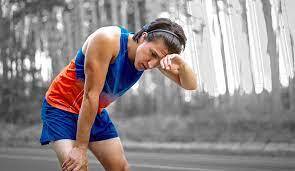A study helps explain Post-COVID exercise intolerance (photo by Yale News)
#LongCovid#PostExertionalMalaise#HealthAwareness#ExerciseCaution#ResearchUpdates
Brief:
Intense physical activity may cause significant harm to muscles in long-term COVID patients, according to a study. Research reveals biological alterations linked to post-exertional malaise. Persisting with strenuous exercise is likely to exacerbate symptoms.
a) Long-term COVID exercise:
The effects of COVID-19 will be felt for a long time, even if it is no longer regarded as a public health emergency. Besides the millions of people who have died because of the coronavirus, millions more have experienced long-term, frequently incapacitating illnesses. Indirect health effects of the pandemic included fatalities from delayed medical care. There is also evidence that the entire impact of the pandemic will take time to materialize, as demonstrated by sizable research that found that two years after infection, some COVID patients had increased risks for a variety of ailments, such as dementia and heart disease.
b) Post-exertional malaise study:
All the patients had post-exertional malaise after the exercise test, and for some of them, it persisted for three weeks, according to Rob Wust, an assistant professor of muscular physiology who co-led the investigation. After getting the coronavirus-induced illness, all the volunteers with lengthy Covid—including former bodybuilders, taekwondo practitioners, and professional athletes—had to quit their jobs full time.
Intense workouts or hardcore exercises can cause serious tissue damage to those who have debilitating collapses following vigorous activity, a syndrome known as post-exertional malaise, according to research from experts in the Netherlands.
Twenty-one unaffected healthy “controls” and twenty-five long-term COVID patients were given high-intensity cycling for eight to twelve minutes by researchers at VU University Amsterdam. Before and after the activity test, participants consented to have samples of their blood and muscles biopsied in order to look for biological alterations that could be responsible for the patients’ chronic, crippling symptoms.
According to the study, which was published this month in the journal Nature Communications, those with lengthy COVID had a noticeably reduced ability to exercise compared to controls. This was linked to a larger proportion of fatigue-prone white muscle fibers and less so-called slow-twitch red muscle fibers.
c) Muscle tissue damage
Following exercise, patients were more likely than controls to exhibit symptoms of severe tissue damage, such as dying muscle fibers, inflammation, and metabolic abnormalities, according to a study of post-exercise tissue taken from participants’ upper leg muscles. Additionally, patients showed a greater buildup of deposits containing amyloid in their muscles, which has been shown in the blood vessels of long-term COVID patients in earlier research.
According to ‘Wust’, the results do not prove a reason for prolonged COVID-19. Nevertheless, he said, it demonstrates a scientific explanation for their symptoms and disproves the notion that they are merely psychological or the result of deconditioning or inactivity.
d) Chronic fatigue syndrome research
In order to better understand the harmful process and develop treatment and prevention strategies, more research is being conducted. This includes looking at people with myalgic encephalomyelitis/chronic fatigue syndrome.
Long-term COVID patient support groups advise a “stop, rest, pace” strategy in the interim to prevent major crashes brought on by high levels of mental, emotional, or physical exertion.
e) Health impacts of intense exercise
‘Wust’ remarked, “Aside from telling them not to overextend themselves so that you get into this problem, we can’t help them yet.” “We know from other studies that it is beneficial to keep your muscles moving and active, but patients need to be aware of their personal exercise threshold and strive to stay below it.”
Conclusion:
Clinical research indicates that biochemical alterations result from post-exercise malaise.
“Pushing through” strenuous exercise may exacerbate symptoms.
